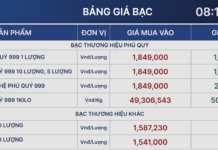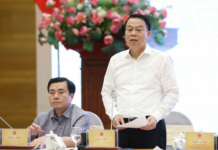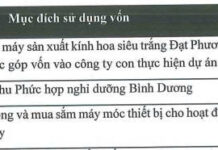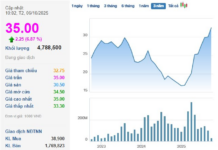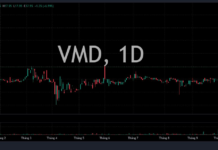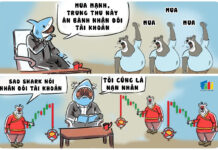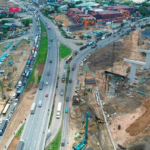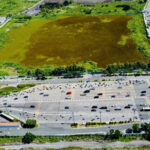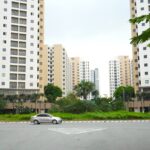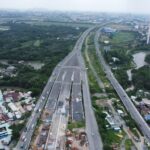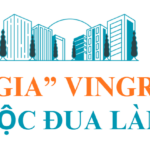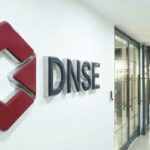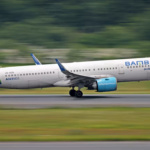As Vietnam’s largest economic hub, Ho Chi Minh City (HCMC) is poised to become the nucleus of an urban-industrial-port-service region, transforming into a leading international metropolis in Southeast Asia and aiming to rank among the world’s top 100 most livable cities.
July 1, 2025, marks a historic milestone as HCMC merges with Binh Duong and Ba Ria-Vung Tau provinces.

HCMC is well-positioned to become a global metropolis. Photo: HOÀNG TRIỀU
Foundation for Growth
With an area of 6,773 km², a population exceeding 13.6 million, and a workforce of over 7.2 million, HCMC currently accounts for 2.04% of Vietnam’s land area, 13.4% of its population, and 14% of its labor force.
Economically, HCMC’s GRDP (excluding oil and gas) is estimated at over 2,821 trillion VND, contributing 22.3% to the national total. Per capita GRDP is approximately 220 million VND, 1.7 times the national average. The city’s budget revenue is projected to reach 737 trillion VND, accounting for 36.7% of the national budget.
The draft Political Report for the 1st HCMC Party Congress (2025-2030) highlights that the merger creates opportunities for market expansion, increased investment attraction, infrastructure connectivity, and enhanced international standing.
This merger represents a comprehensive restructuring of development space, uniting three of Vietnam’s most dynamic economic hubs with a new vision: to become a leading international metropolis in Southeast Asia, ranking among the world’s top 100 most livable cities. This vision positions HCMC as a pioneer, driving development across the nation.
HCMC has restructured its development space based on the concept of “one center, three regions, and one special zone.” The city possesses the conditions to become a multi-centered metropolis developing along four corridors, with five pillars: industrial and logistics hub, international financial center, tourism and cultural industry, education-healthcare hub, and science-technology center.

Vo Van Minh, Deputy Secretary of the HCMC Party Committee and Chairman of the People’s Council, speaks at a recent conference. Photo: THIỆN AN
Ready for Global Reach
Dr. Tran Du Lich, Chairman of the Advisory Council for the Implementation of National Assembly Resolution 98/2023, believes the merger is not merely a combination of three administrative units but a “strategic multiplier” that will create a breakthrough in scale, position, and competitiveness. He asserts that no other place in Vietnam possesses such strong growth momentum as HCMC.
Given its advantageous development space and geo-economic strengths, Dr. Tran Du Lich emphasizes that HCMC must focus on developing a multi-centered metropolis, “embracing rivers and facing the sea,” to ensure good governance, rapid growth, and sustainable development. He sees this as an opportunity for HCMC to elevate its position, role, and international standing.
From a planning perspective, Dr. Ngo Viet Nam Son emphasizes that sustainable development becomes a central focus within the vision of a “regional super-metropolis.” As urban scale expands, pressure on infrastructure, transportation, environment, and social welfare also increases. The city should redesign its spatial structure to limit population concentration in the urban core.
Dr. Ngo Viet Nam Son stresses that HCMC’s urban regional development planning must be internationally oriented, multi-centered, and highly connected. The city should not only pursue economic growth but also strive for harmonious social and environmental development, creating a safe and opportunity-rich environment for its residents.
Reflecting to Move Forward
Vo Van Minh, Deputy Secretary of the HCMC Party Committee and Chairman of the People’s Council, expresses joy at the city’s achievements during the 2020-2025 term. However, he acknowledges the challenges and limitations that need to be overcome.
These include unsustainable economic growth, inefficient investment, overburdened infrastructure, population pressure, flooding, traffic congestion, a growth model heavily reliant on manufacturing, and underdeveloped maritime economic potential.
Vo Van Minh believes that in the next term, to maintain its role as the nation’s economic leader, contribute significantly to national GRDP, and meet expectations, HCMC must focus on several key tasks. These include rigorously implementing Phase 2 of the overall plan for reorganizing specialized agencies and public service units, and promptly issuing decisions outlining the functions, tasks, and authority of reorganized units to ensure stable, efficient, and effective operation of the two-tier local government apparatus.
Additionally, HCMC will continue to effectively implement Resolution 31-NQ/TW, Resolution 24-NQ/TW of the Politburo, the Prime Minister’s Conclusion at the 5th Meeting of the Southeast Region Coordinating Council, and Resolution 84/2024 of the Government through concrete, practical actions with clear results.
Another crucial task is to submit to the Government and the National Assembly for consideration and approval the plan to amend and supplement Resolution 98/2023 of the National Assembly, creating a legal basis for mobilizing all resources for development.
Vo Van Minh also emphasizes the need to decisively remove planning bottlenecks, improve land resource utilization efficiency, and strive to achieve the highest possible economic growth target of double digits as outlined in Conclusion 123-KL/TW of the Party Central Committee.
Vo Van Minh states that a major task for the city is to effectively implement key Politburo resolutions.
These include Resolution 57-NQ/TW (2024) on breakthroughs in science-technology development, innovation, and national digital transformation; Resolution 59-NQ/TW (2025) on international integration in the new situation; Resolution 66-NQ/TW (2025) on renewing legal development and enforcement to meet the demands of national development in the new era; Resolution 68-NQ/TW (2025) on private economic development; Resolution 71-NQ/TW (2025) on breakthroughs in education and training development; and Resolution 72-NQ/TW (2025) on solutions to enhance public health protection, care, and improvement.
Strong Foundation for the Future
According to the draft Political Report for the 1st HCMC Party Congress (2025-2030), most socio-economic targets for the 2020-2025 term have been achieved.
Former localities like Binh Duong province continue to assert themselves as major industrial centers, while Ba Ria-Vung Tau province experiences rapid and stable development based on industry, logistics-ports, tourism, and high-tech agriculture. Meanwhile, HCMC, prior to July 1, 2025, maintains its role as the nation’s economic leader, a special urban center, and a leading hub for economics, culture, finance, trade, services, science-technology, innovation, and human resource development.
Complexest Interchange of Ho Chi Minh City’s Ring Road 3 Project to Open by Year-End, Boosting Surrounding Real Estate Projects
Prime real estate projects strategically located along key transportation arteries such as Ring Road 3, Ring Road 4, the Tan Van interchange, the expanded National Highway 13, the Bien Hoa – Vung Tau Expressway, and the HCMC – Thu Dau Mot – Chon Thanh Expressway are poised for a significant price surge by year-end.
Unraveling Land Valuation Challenges in Ho Chi Minh City’s Thu Thiem Eco Smart City Project
The Thu Thiem Eco Smart City project, which granted land allocation to Lotte Group in October 2022, faced legal challenges during the process of hiring a consultant to determine land pricing. Following the issuance of Decree 71 by the Government on August 1, 2024, Ho Chi Minh City promptly adhered to the prescribed procedures, completing the process within a remarkably short timeframe.
Ho Chi Minh City Proposes Canceling Auction of Nearly 1,000 Resettlement Apartments
Homes and land designated for resettlement in Ho Chi Minh City are currently in a state of both surplus and shortage. Over the past year, the allocation rate for resettlement housing and land has reached only 11%.





